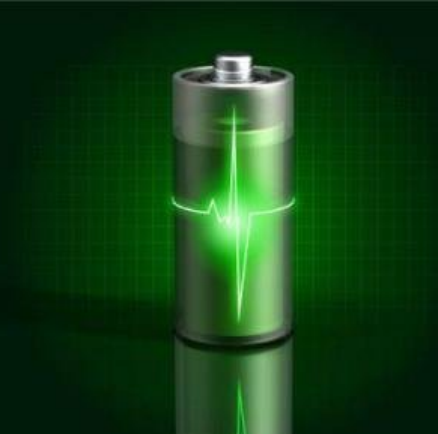1. Introduction
Just 24 hours ago, global architecture firm Foster + Partners unveiled a new eco-campus in Copenhagen featuring a striking zinc clad dormer and corten steel facade—reigniting interest in high-performance metal cladding systems. As sustainability and longevity drive modern construction, understanding the nuances of metal clad options has never been more critical.

Whether you’re designing a steel clad house, specifying standing seam siding, or sourcing clad steel for industrial piping, not all metal cladding is created equal. In this guide, we break down seven essential types of metal clad used today—comparing their properties, costs, and ideal applications.
2. What Does ‘Metal Clad’ Actually Mean?
‘Metal clad‘ (or ‘metalclad’) refers to a composite material where a base metal is bonded—mechanically, metallurgically, or through electroplating—to another metal layer for enhanced performance. The term also describes architectural surfaces finished with metal panels, such as a metal clad wall or metal clad roof.
Clad metals combine the structural strength of one alloy with the corrosion resistance, conductivity, or aesthetic appeal of another. Examples include aluminum clad stainless steel, titanium clad plates, and copper nickel clad pipes.
3. Corten Steel: Rust as a Feature, Not a Flaw
Corten steel siding has surged in popularity thanks to its self-protecting rust patina. Unlike traditional steel, corten forms a stable oxide layer that halts further corrosion—ideal for exterior corrugated metal siding or dramatic steel facade installations.
Pros:
- Minimal maintenance after initial weathering
- Unique, evolving aesthetic
- High tensile strength
Cons:

- Staining runoff can damage adjacent surfaces
- Corten siding cost ranges from $8–$15/sq.ft., higher than standard steel
Best for: Sculptural buildings, urban lofts, and landscape features where raw industrial beauty is desired.
4. Zinc Cladding: Sleek, Sustainable, and Self-Healing
Zinc metal siding offers a cool-gray finish that develops a protective carbonate layer over time. A zinc clad roof or zinc facade ages gracefully without painting or sealing.
Zinc is 100% recyclable and boasts a lifespan exceeding 80 years. It’s commonly used in pac clad standing seam systems and pac clad column covers for commercial projects.
Compared to corten, zinc is lighter and less prone to runoff issues—but it comes at a premium price. Still, its low lifecycle cost makes it a favorite among green architects.
5. Copper and Aluminum: Classic Beauty vs. Modern Versatility
Copper siding delivers unmatched elegance and antimicrobial properties. Over decades, it shifts from shiny rose-gold to deep green patina. However, copper is expensive and soft—best reserved for accents or heritage restorations.
Aluminum clad steel, by contrast, dominates residential and light commercial builds. Lightweight, corrosion-resistant, and available in finishes like Colorbond standing seam, it’s perfect for metal clad houses and sheds.

Vertical standing seam metal siding in aluminum offers clean lines and excellent water shedding—ideal for modern metal weatherboard designs.
6. Stainless and Alloy Clad Systems for Heavy Industry
Beyond architecture, clad metals are vital in oil, gas, and chemical processing. Aluminum clad stainless steel and stainless clad aluminum combine cost efficiency with corrosion resistance.
Specialized variants include 2024 T3 clad and 7075 T6 clad aluminum plates for aerospace, and Inconel 625 weld overlay plates for extreme heat environments. These alloy clad materials protect boiler plate steel and carbon steel plate cores from degradation.
Electroplating methods like chromium electroplating or electroless nickel create thin but effective barriers on brass plate, mild steel plate, or diamond plate steel—extending service life without bulk.
7. Electrical and Insulation Applications: Don’t Overlook the Wires
Metal clad isn’t just for walls and roofs. Metal clad electrical wire (like aluminum clad steel wire or Cu clad wire) provides robust protection in commercial settings—yes, even in Pennsylvania, where code permits surface-mounted MC cable.
Similarly, aluminum clad pipe insulation uses reflective aluminum sheets over foam cores to reduce thermal loss in HVAC systems—a key component in energy-efficient metal clad buildings.
8. Conclusion
From the rugged charm of a corten steel plate to the refined sheen of a zinc clad dormer, metal clad solutions offer unmatched versatility. Whether you’re choosing standing seam facade panels, perforated plate accents, or clad metal for industrial use, understanding material trade-offs ensures smarter, longer-lasting builds.
As architects and engineers push toward net-zero construction, expect innovations in recycled-content clad metals and hybrid systems—making ‘metal clad’ not just a trend, but a cornerstone of future-proof design.
Our Website founded on October 17, 2012, is a high-tech enterprise committed to the research and development, production, processing, sales and technical services of ceramic relative materials such as 7. Our products includes but not limited to Boron Carbide Ceramic Products, Boron Nitride Ceramic Products, Silicon Carbide Ceramic Products, Silicon Nitride Ceramic Products, Zirconium Dioxide Ceramic Products, etc. If you are interested, please feel free to contact us.
